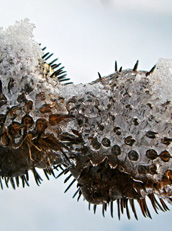Writings / Reviews
Lee Maracle feels that Salish models of oratory, unlike the “Western,” convey “a powerful sense of justice,” encourage holistic thinking, and utilize a “lean, poetic, dramatic … structure.” Stephen Slemon takes a broad view of “CanLit,” suggesting that it is imperiled both by the displacement of literature by “Media and Communication Studies” and by bidding ex-outsiders (new minority-group professors) who accept the scholarly models and values of their employers. Richard Cavell makes a cogent point, noting that “Canada is the product of not one but two empires, and thus we were international before we were national.” He is one of the few contributors to interpret Canada as a shadowy offshoot of European imperialism, which is, in my opinion, precisely who “we” are. Lily Cho advises that we dwell in the “dissonance between diaspora and citizenship … to enable memory to tear away at the coherence of national forgettings.” Scholars should insist on putting Canadian history on trial, so that the true nature of our Confederation – invasion, exploitation of land and people, and support for Anglo (imperial) militarism – is never forgotten. Winfried Siemerling calls for an end to simple nationalism, but also fresh scrutiny of “local specificity.” Can Lit is a home response to global influences. Len Findlay’s anchor paper reminds us of “Canada’s paradoxical status as a First World / Third World client state” but also of the constant effort (as Daniel Coleman’s contribution also attests) “to recentre sanctimonious nordicities at the expense of Canada’s hurtful history.” We salute the Great White North so we don’t need to deal with our issues of racism and exclusion.
Trans.Can.Lit. tells us what some leading Canadianists consider to be the problems of our literary scholarship: either too much navel-gazing or too much reveling in the “global”; either too much exclusion of ‘others’ or too much ‘assimilation’ of them to bourgeois, liberal norms. Two problems trouble this book: 1) it is the work of a coterie – a school – who agree with and cite each other; 2) seldom is actual history or politics invoked.
Yet, “CanLit” is the expression of an imperially implanted, conservative, European monarchy wedded culturally and economically to a libertarian, radical republic. Wherever ‘here’ is, it begins here, in the contradictions of our existence.
The Book of Negroes
by Lawrence Hill
Toronto: HarperCollins, 2007.
African-Canadian author Lawrence Hill’s third novel, The Book of Negroes (HarperCollins Canada, $24.95), published last year to critical acclaim and a battery of prizes, including two 2008 Commonwealth Writers’ Prizes, the regional (Canada and the Caribbean) and the global (the Commonwealth), is an impressive work of historical reconstruction.
Hill’s saga sweeps from mid-18th-century Africa to South Carolina and New York at the time of the American War of Independence. It moves to Nova Scotia with the 1783 arrival of Loyalists – black and white, and then follows Black Loyalist exiles to Sierra Leone, West Africa, to which they voyaged in 1792. It ends with the heroic narrator, Aminata (Meena) Diallo, writing her autobiography in London, England, in 1802.
Like African-Canadian scholar Afua Cooper in her Governor-General’s Award-nominated history, The Hanging of Angelique (2006), Hill strives to give readers a sense of colonial Canada’s participation in slavery and its reception of black migrants as well as a sense of the pan-African context of enslavement, rebellion, abolitionism, and the return movement to Africa (Sierra Leone). Hill’s work Canadianizes African-American classics such as Alex Haley’s Roots, Ernest Gaines’ The Autobiography of Miss Jane Pittman, Toni Morrison’s Beloved, and Charles Johnson’s The Middle Passage, while reworking explicitly the famous slave narrative of Olaudah Equiano and the satirical journeys of Jonathan Swift’s Gulliver’s Travels.
Adept at fashioning witty dialogue, Hill also drafts the tortures of slavery with vivid, yet properly revolting, precision: “They dragged me to the branding corner. Their wounding metal was curved like a giant insect. As they brought it toward me, I defecated. They aimed a finger’s length above my right nipple, and pressed it into my flesh. I could smell it burning. The pain ran through me like hot waves of lava.”
Writing about slavery falls into two main categories: the romantic and heroic or the tragic and absurd. Though Hill recounts the typical horrors (mass murders, splitting up of families, the stench of slave ships, the death-march coffles, rape, etc.), his novel is, ultimately, a romance starring an almost magically indomitable heroine. The novel’s first sentence is, “I seem to have trouble dying,” and the narrator, Aminata, is unkillable—like U.S. slave liberator Harriet Tubman—and likely wears seven-league boots. She survives every ill; too, marvelously, she prospers. But her triumphs are predictable, given Hill’s devotion to the theme (in three novels now) that intellect and literacy yield ‘greatness’ and fame for the holder of these gifts.
Thus, Aminata—Meena—hobnobs with elites (even meeting George III and Queen Charlotte Sophia), profits in every circumstance, makes friends easily (even of enemies), and is always able to write her way to better circumstances: her scribing of the registry titled ‘The Book of Negroes’ creates an essential, genealogical document, and her inking of her memoirs will help abolitionists end the British engagement in the slave trade (but only after many Britons have gotten rich).
The story is middle-class optimism: the talented shame the prejudiced; the individual intellectual wins power by speaking the experience of the ‘folk.’ Slavery was evil, but the happy result is, “We (blacks) are (now) a travelling people….”
The Book of Negroes is a fine read. Yet, despite its grounding in history, its superheroine requires one suspend much disbelief. Hill’s romance fantasy spends 60 pages in 1780s Nova Scotia, settling Meena there long enough to lose her daughter (she thinks), then decide to journey, with 1,200 others, to Sierra Leone in 1792. However, the 2,000 Black Loyalists who stayed to make their lives in Nova Scotia are forgotten.



